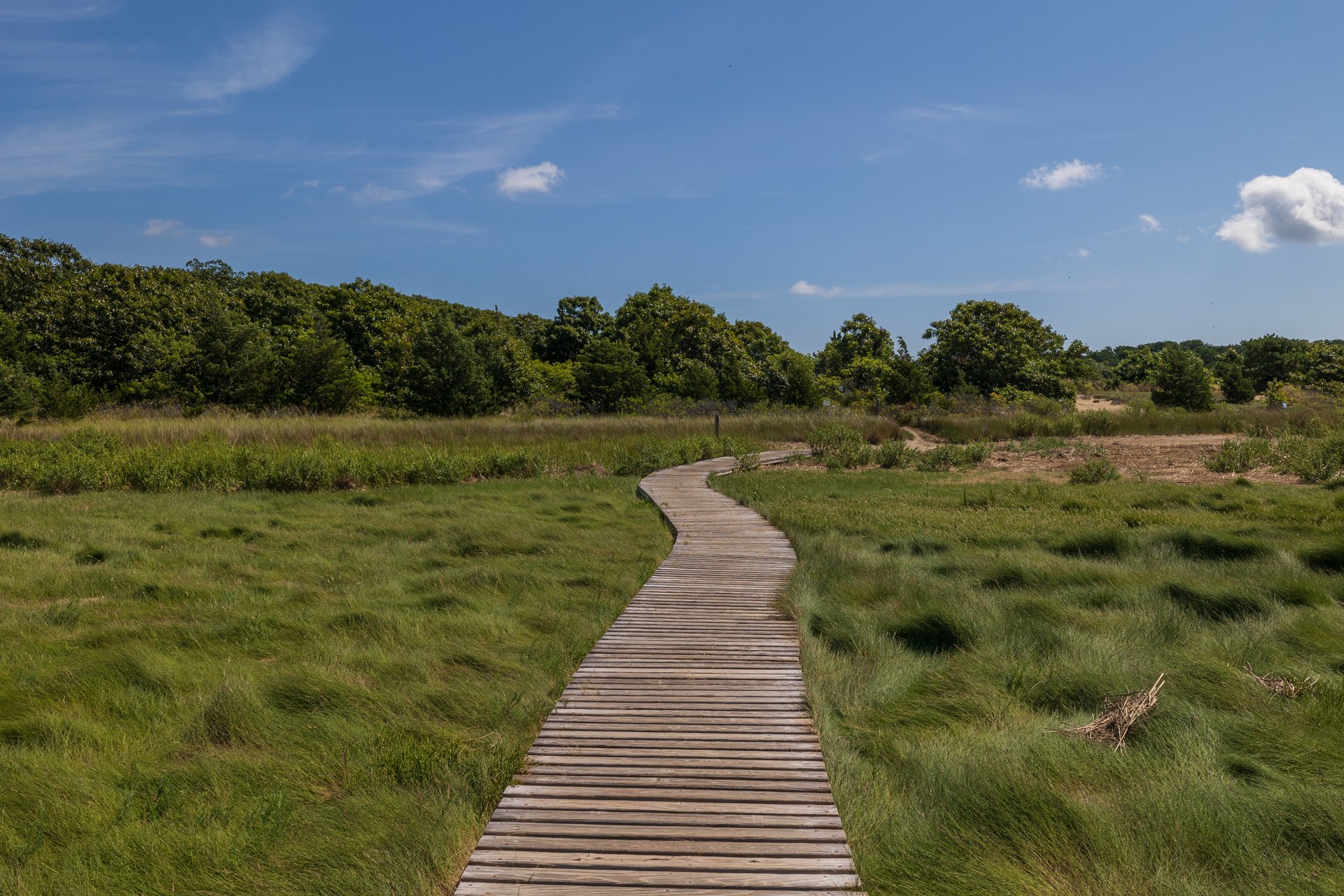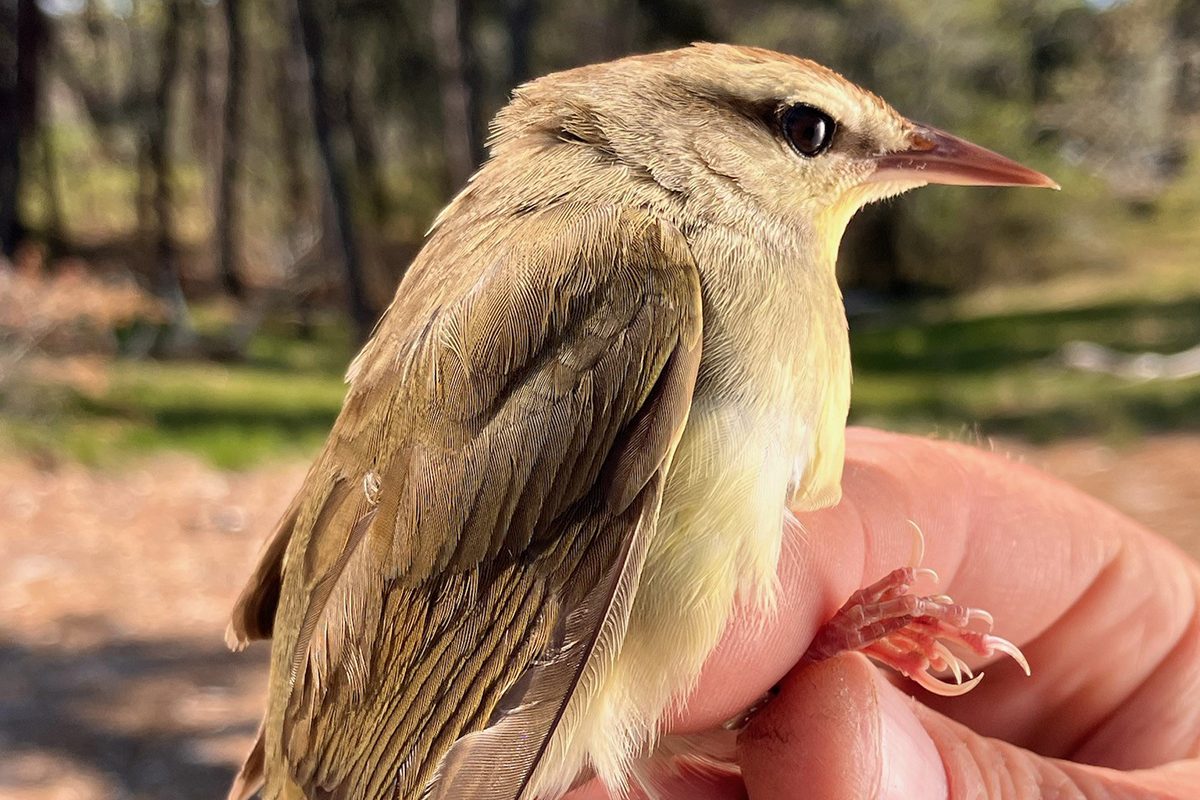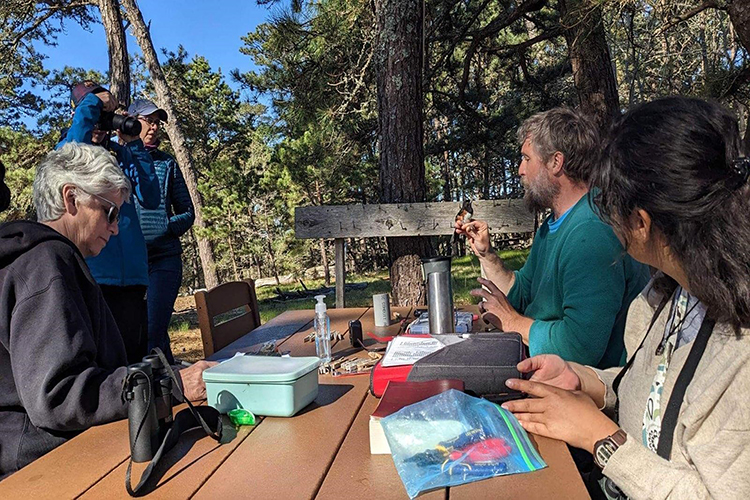The Spring 2023 banding season wrapped up with what felt like a weekend nor’easter in early June. On June 1st, we had our slowest day ever with only three recaptures and not a single newly banded bird for a full day of netting effort. This was a sad but accurate summary of our entire banding season...slow! With 573 birds banded and 469 birds recaptured and 35 unbanded for a total of 1077, our 2023 total was down 24% from last year.
A Spike in Southern Species
Despite the wet, chilly finish to the season, the month of May featured plenty of good weather and an amazing influx of southern warblers. We observed a Yellow-throated Warbler, Prothonotary Warbler and captured a Worm-eating Warbler and Swainson’s Warbler. The Swainson’s Warbler, only the 11th sighting for the state of Massachusetts, is the second least numerous North American warbler, with a population of only 160,000 birds. It was the rarest bird we have ever captured at Wellfleet Bay.
Winter’s Impact
The cold snap in February that knocked back everyone’s hydrangeas seemed to impact some of our local overwintering birds, too. There were only two active bluebird nests at the sanctuary this spring, both parented by second-year birds and the number of color-banded Pine Warbler on territories plummeted from about 60% to less than 40%. These birds are both on the northern edge of their winter range and flock together in winter. It’s one of many ways birds are affected by climate change: birds move north as the climate warms, but extreme cold spells strongly impact these climate pioneers.
Some Help from Merlin
Along with banding, our team also reports every bird we see and hear each day. This spring, we were greatly helped by the Cornell Lab of Ornithology’s Merlin app. We used it to help identify birds we were unsure of and confirm birds we knew. Our protocol was strict: you needed to know the bird independently of Merlin or confirm it visually. But even with these restrictions, the app helped teach our spring banding tech, Siamara Alejandro, a young biologist from Puerto Rico, the local birds from scratch and greatly increased everyone’s songbird language skills. If you haven’t tried Merlin yet, we recommend you do and see if it makes a difference to your birding!
This article was contributed by master bander James Junda, who oversees Wellfleet Bay’s bird banding station. The station operates under a permit issued by the United States Geological Survey’s Bird Banding Lab.
Stay Connected
Don't miss a beat on all the ways you can get outdoors, celebrate nature, and get involved.





